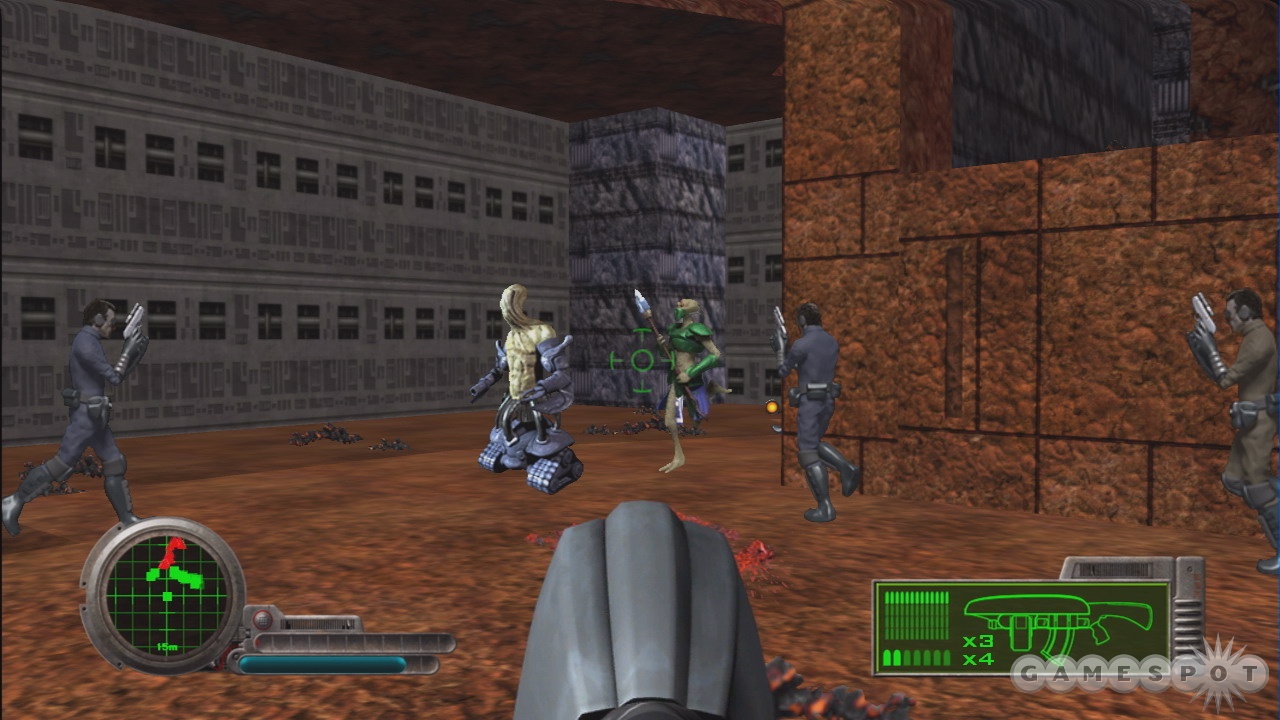A lot of people have never heard of Marathon, and there's a reason for that. Long described as the Mac's answer to Doom, Marathon was released in 1994 and featured excellent single-player and multiplayer gameplay. Not many noticed, though, since the series was almost exclusive to Apple's Macintosh platform. But the release of Marathon: Durandal for Xbox Live Arcade is sure to be of interest to more than just a few middle-aged Marathon fans, because arguably, without Marathon there would have never been a Halo. That's because Marathon was the breakout game that put a tiny Mac developer called Bungie on the map.

It's a bit strange that Durandal was the Marathon game ported to Xbox Live Arcade. Its original title was Marathon 2: Durandal, as it was the middle chapter of Bungie's trilogy, so you'll jump into the middle of the overarching story, though some text-only narrative will get you up to speed quickly. While the series has no official ties to the Halo universe, it's hard not to play Durandal without seeing the kernel of many of the ideas that would later go into Bungie's most famous franchise. For instance, you play as a lone human security officer who, aided by an artificial intelligence construct, must battle an incredibly powerful alien menace that's looking to invade Earth.
If you jump into Durandal, keep in mind that it was originally released in 1995, and it is a first-person shooter that is very much a product of its times. This is a game from the cusp of the shooter era, so it uses a blend of 3D environments and 2D bitmaps for enemies and objects. Be careful, though, as the motion and swaying while you're running around the game might make you nauseous. The Xbox Live Arcade version of Durandal at least offers high-resolution textures, which is good news if you've tried to play the original game on a modern system and got migraines from the incredibly pixelated look. At the same time, though, the new art has boosted the size of the game to 135MB, which is absolutely huge for an Xbox Live Arcade game, and a magnitude larger than the original Mac version.
The gameplay itself hasn't changed a bit, which is both good and bad. If you're an old-school Marathon fan looking for a nostalgic ride, then you'll probably feel quickly at home. But if you've never played an early first-person shooter, you might be turned off by the relative crudeness of the graphics and the gameplay. Sure, Durandal was a good game when it was released in 1995, but the standard for shooters has evolved considerably since then. The story is also more than a bit dense. It's told mainly through cryptic computer-terminal entries, and in many ways it's hard to figure out what you're doing. For instance, there's not a lot of handholding or structure to the levels, so you'll run around trying to figure out what to do. It gets a bit more confusing when you realize that some doors won't activate until you step on the right spot, so a seemingly dead end will have you running around in circles, and then, suddenly, the way is open. The controls are also a bit clumsy, as actions such as swimming involve the clicking of the joysticks, and there's no way to jump or reload.

Durandal had some of the best multiplayer for its era, but it feels small and constrained today. The levels aren't very large, and the level design itself is fairly rudimentary. At least there's no shortage of modes, including cooperative and competitive ones. "Kill the guy with the ball" features a skull for the ball, which is a forebear of the Halo mode oddball. You can do up to four-player split-screen on a single Xbox 360, as well as System Link and Xbox Live, with support for up to eight players. Unfortunately, we couldn't find a single public or ranked match over the course of two days, which seems to indicate that there isn't a large multiplayer following.
Marathon: Durandal's value is mainly that of a cultural artifact of an earlier age--one that comes in at 800 points ($10). At the same time, it's also a bit startling to realize just how little the genre has evolved since the days of the original Marathon. The advancements introduced by Marathon are numerous. It was the first shooter to feature dual-wielding weapons as well as a real-time map; and, of course, it was the spiritual predecessor to Halo. As a game, though, it really shows its age, and it proves to be an interesting, though not exactly engaging, experience.